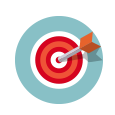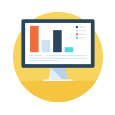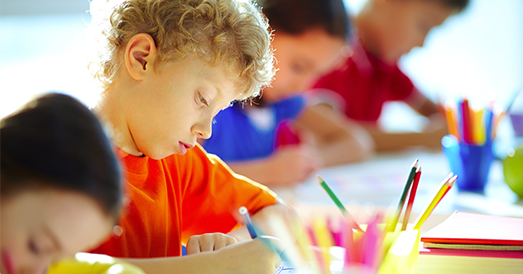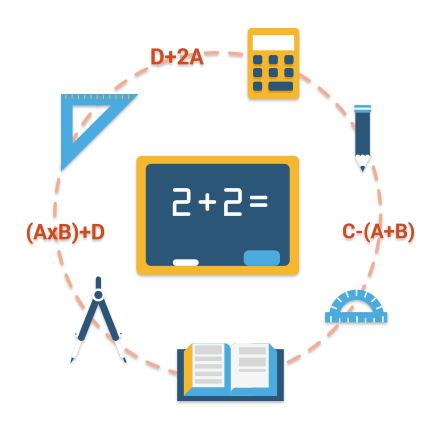Year 4 Maths
Year 4 maths is the second part of Key Stage 2 mathematics. You will continue to learn subtractions, multiplication and division this time using 3 figures for all your calculations. In year 4 maths, you will start to learn about geometry, in particular, quadrilaterals. The study of quadrilaterals will include; classifying quadrilaterals, using the properties of a parallelogram, proving a shape is a parallelogram, properties of the rectangle, square, rhombus, trapezium and kite. In Year 3 Maths you start to learn about simple data, however Year 4 Maths takes this to the next stage as you study line graphs and how to create and use them, as well as revisiting bar charts and line graphs, which you will take even further during Year 5 Maths. Throughout both Key Stage 1 and Key Stage 2 maths, you study fractions and decimals and during year 4 you will learn how find equivalent fractions whilst also learning how to compare and order decimals to two decimal places.
.Popular Maths Curriculum Courses in England.
Key Stage 2
Year 5 Maths
Year 5 introduces multiples and factors of whole numbers, reducing fractions to lowest equivalent form and rounding decimals amongst other topics.
Key Stage 2
Year 6 Maths
Algebraic equations, rounding decimals, dividing and multiplying fractions and problems with length, mass and area are all introduced in year 6.
Key Stage 3
Year 7 Maths
Topics include an introduction to the square centimetre, geometry transformations without matrices and statistic probability.
Key Stage 3
Year 8 Maths
During year 8 you will be introduced to the formula of volume, whilst you will also study algebraic expressions to a higher level as you will begin to expand algebraic expressions.



KS2 Maths Topics
#
TOPIC
TITLE
1
Calculation-larger numbers
The numbers 100 to 999
Objective: On completion of the lesson the student will be able to count to 999, skip count by 10s and 100s to 999 and use pictures or objects to represent the numbers 100 to 999.
2
Place value
The numbers 1000 to 9999
Objective: On completion of the lesson the student will be able to count to 999, skip count by 10s and 100s to 999 and use pictures or objects to represent the numbers 100 to 999.
3
Counting and numeration
The numbers 10 000 to 99 999
Objective: On completion of the lesson the student will be able to count to 99 999 and use place value to read the value of the numerals within the larger numbers.
4
Counting and numeration
Seven digit numbers
Objective: On completion of the lesson the student will be able to use place value knowledge to read and write seven digit whole numbers.
5
Addition
Addition up to the number 999
Objective: On completion of the lesson the student will be able to use place value to solve and record addition problems with three digit numbers.
6
Counting and numeration
Addition to 9999 and beyond
Objective: On completion of the lesson the student will be able to use the student’s knowledge of place value to solve addition problems with 3, 4 and 5 digit numbers and word problems.
7
Subtraction
Subtraction with borrowing
Objective: On completion of the lesson the student will be able to record subtraction number sentences and will understand the need to trade between place value columns using the renaming method
8
Subtraction
Subtraction up to the number 999 using the renaming method
Objective: On completion of the lesson the student will know another way to trade between columns in subtraction using the renaming method. The student will also learn how to solve number sentences with missing numbers.
9
Subtraction
Subtraction involving four digit numbers and beyond using the renaming method.
Objective: On completion of the lesson the student will be able to use written methods to solve subtraction problems involving 4 and 5 digit whole numbers.
10
Multiplication
Multiplication using extended algorithms.
Objective: On completion of the lesson the student will have understood multiplication using extended algorithms.
| # | TOPIC | TITLE | |
|---|---|---|---|
| 1 | Calculation-larger numbers | The numbers 100 to 999 | |
| Objective: On completion of the lesson the student will be able to count to 999, skip count by 10s and 100s to 999 and use pictures or objects to represent the numbers 100 to 999. | |||
| 2 | Place value | The numbers 1000 to 9999 | |
| Objective: On completion of the lesson the student will be able to count to 999, skip count by 10s and 100s to 999 and use pictures or objects to represent the numbers 100 to 999. | |||
| 3 | Counting and numeration | The numbers 10 000 to 99 999 | |
| Objective: On completion of the lesson the student will be able to count to 99 999 and use place value to read the value of the numerals within the larger numbers. | |||
| 4 | Counting and numeration | Seven digit numbers | |
| Objective: On completion of the lesson the student will be able to use place value knowledge to read and write seven digit whole numbers. | |||
| 5 | Addition | Addition up to the number 999 | |
| Objective: On completion of the lesson the student will be able to use place value to solve and record addition problems with three digit numbers. | |||
| 6 | Counting and numeration | Addition to 9999 and beyond | |
| Objective: On completion of the lesson the student will be able to use the student’s knowledge of place value to solve addition problems with 3, 4 and 5 digit numbers and word problems. | |||
| 7 | Subtraction | Subtraction with borrowing | |
| Objective: On completion of the lesson the student will be able to record subtraction number sentences and will understand the need to trade between place value columns using the renaming method | |||
| 8 | Subtraction | Subtraction up to the number 999 using the renaming method | |
| Objective: On completion of the lesson the student will know another way to trade between columns in subtraction using the renaming method. The student will also learn how to solve number sentences with missing numbers. | |||
| 9 | Subtraction | Subtraction involving four digit numbers and beyond using the renaming method. | |
| Objective: On completion of the lesson the student will be able to use written methods to solve subtraction problems involving 4 and 5 digit whole numbers. | |||
| 10 | Multiplication | Multiplication using extended algorithms. | |
| Objective: On completion of the lesson the student will have understood multiplication using extended algorithms. | |||
See More Topics Covered in Year 4 Key Stage 2 Maths
..









